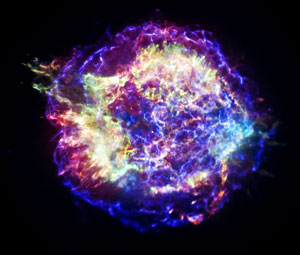 Figure 1: The Cassiopeia A supernova remnant as observed by NASA's Chandra X-ray Observatory. Calculations by RIKEN based on Chandra data indicate that the progenitor star had a companion, which has yet to be observed. © NASA/CXC/SAO
Figure 1: The Cassiopeia A supernova remnant as observed by NASA's Chandra X-ray Observatory. Calculations by RIKEN based on Chandra data indicate that the progenitor star had a companion, which has yet to be observed. © NASA/CXC/SAO
The massive star that exploded to form the supernova known as Cassiopeia A most likely had a companion star that has yet to be spotted, a spectroscopic analysis by RIKEN astrophysicists suggests1. This will provide fresh impetus to efforts to locate the companion.
Supernovae are among the most violent events in the Universe. They occur when a massive star exhausts its supply of fuel and its core collapses under the huge gravitational pull of the star.
/Public Release. This material from the originating organization/author(s) might be of the point-in-time nature, and edited for clarity, style and length. Mirage.News does not take institutional positions or sides, and all views, positions, and conclusions expressed herein are solely those of the author(s).View in full here.






